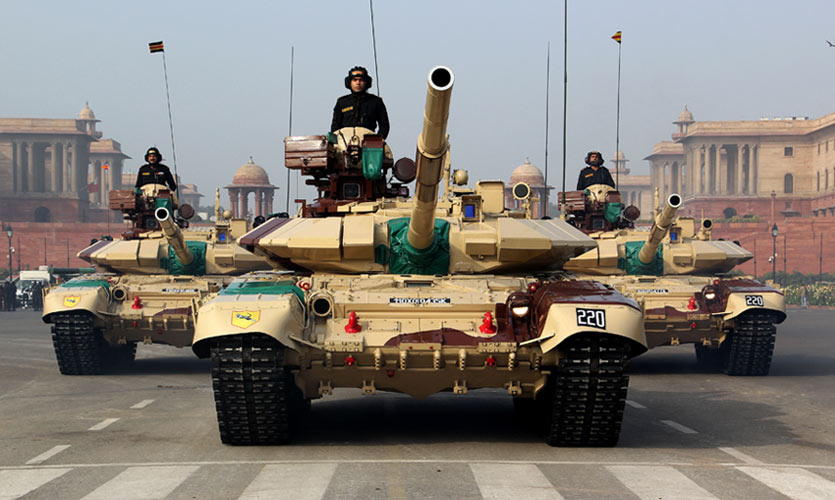After releasing the Economic Survey 2022 on January 31, Finance Minister Nirmala Sitharaman presented the Union Budget on February 1. Sitharaman said that the country is expected to grow at 9.27 percent in 2022-23. She further said that the new financial year will focus on four pillars of development – inclusive development, productivity enhancement, energy transition and climate action – and that the budget will give a blueprint of the economy from India at 75 to India at 100.
The latest plans chalked out for the defence funds have reiterated the Indian government’s push for self-reliance or ‘atma-nirbharta’, with 68 percent of the capital procurement budget for defence to be set aside for the domestic industry. This has increased from 58 percent last fiscal to reduce dependence on imports of defence equipment.
Finance Minister Sitharaman said that in order to push for “atma-nirbharta” in the defence sector, research and development into defence and equipment development by private corporations, start-ups and academia needs to be encouraged. In her budget speech, Sitharaman said, “Our Government is committed to reducing imports and promoting atma-nirbharta in equipment for the Armed Forces. 68 percent of the capital procurement budget will be earmarked for the domestic industry in 2022-23, up from 58 percent in 2021-22.”
She further added, “Supportive policies, light-touch regulations, facilitative actions to build domestic capacities, and promotion of research and development will guide the government’s approach. For R&D in these sunrise opportunities, in addition to efforts of collaboration among academia, industry and public institutions, government contribution will be provided.”
At the joint budget session that took place ahead of the budget speech, President Ram Nath Kovind announced that India will discontinue the import of 209 defence items. While addressing both the Houses, the President said that India will now manufacture such defence items. The announcements created much buzz among stock market analysts, who believed that the new announcement could signal the Government of India’s agenda on defence manufacturing, which was later confirmed at the Budget Session.
As per the budget documents, the defence sector’s capital expenditure outlay has increased significantly, by 19 percent. In FY22, the ministry’s capital outlay was Rs 1.35 trillion, with the major funds targeted at new acquisitions and military modernisation. This means that in total, the budgetary allocation to the Ministry of Defence has risen 9 percent year-on-year to Rs 5.25 trillion in FY23 from Rs 4.7 trillion in FY22. The defence budget consists primarily of a large capital outlay, revenue expenditure for small acquisitions and spares, and defence pensions. The revenue and pension expenditure has remained stable with the revenue outlay having marginally increased to about Rs 2.12 trillion, while the defence pensions outlay reduced year-on-year to about Rs 1.16 trillion. As per a News18 report, despite the modest increase in outlay last year, defence services have been slow in spending their capital budgets this fiscal, with the army spending only about 40 percent of its allocation. The Indian Air Force has spent about 70 percent and the Navy spent 90 percent of its capital outlay. The report further quoted unnamed sources as saying that Defence Minister Rajnath Singh had asked senior military officials to expedite spending of their capital budgets by the end of the financial year.
Read more: Budget 2022: Rs 2.37 Lakh Crores MSP To Be Paid To Farmers, Focus Directs On Agri-Tech
In October 2021, the government started seven new defence companies from the government department Ordance Factory Board: Munitions India Ltd, Armoured Vehicles Nigam Ltd, Advanced Weapons and Equipment India Ltd, Troop Comforts Ltd, Yantra India Ltd and India Optel Ltd and Gliders India Ltd. The move was made in order to enhance the functional autonomy and efficiency of defence-related manufacturing operations. The private sector has been encouraged to design and develop military platforms and equipment in collaboration with the government-owned Defence Research and Development Organisation (DRDO) and other organisations through the Special Purpose Vehicle (SPV) model. “An independent umbrella body will be set up for meeting wide-ranging testing and certification requirements,” explained Sitharaman on the workings of the collaboration.
“Artificial intelligence, geospatial systems and drones, semiconductors and its ecosystem, space economy, genomics and pharmaceuticals, green energy, and clean mobility systems have immense potential to assist sustainable development at scale and modernise the country,” added the minister.










